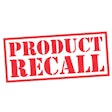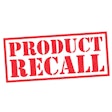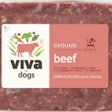
Petfood processors have become increasingly aware of the need to control Salmonella during production due to the risk of associated pet and human illness. Processors know how problematic this pathogen can be but may not fully understand the scientific dynamics surrounding effective elimination and potential for recontamination during processing based on heat resistance and persistence in low-moisture products such as petfood.
Control of Salmonella for petfood processors requires a lethality, or “kill,” step as a critical point(s) during processing to consistently support the production of Salmonella-free products. Like other low-moisture food products, petfoods and treats require special consideration in the development, validation and implementation of an effective kill step based on the unique ability of Salmonella to resist thermal processing.
Moreover, Salmonella can persist indefinitely in a dehydrated state such that it remains viable and available for recontamination of thermally processed, low-moisture food products and, thus, can represent a food safety risk. Validation of processing steps used to reduce and control Salmonella is necessary to scientifically prove and ultimately demonstrate that a process is effective.
Collectively, validation includes :
- Reviewing scientific data for related products and processes;
- Determining a proper log reduction for the specific process based on the expected, incoming levels;
- Determining defined critical limits to achieve the targeted reduction; and
- Confirming that the equipment and process can consistently deliver the required parameters to meet these limits.
Verification activities and supportive records that demonstrate the process is consistently performing according to the established parameters are also key to ensuring the validated process has been properly implemented and maintained. This may include equipment calibration and performance records as well as product performance data possibly comprised of both chemical and microbiological data of raw materials as well as in-process and finished products.
Validation studies must also be designed to encompass the entire process being used to prevent, reduce and control recontamination of the finished product. Further, use of raw materials in the validation should represent those routinely used to best assess process performance and therefore adequately validate actual conditions.
Effectiveness of a process should be determined considering the worst case scenario, using a Salmonella serotype with the greatest level of resistance and handling conditions that would be representative of those likely to occur during normal handling and distribution. Validation conditions must be carefully developed, in particular for low-moisture food products.
Based on previous studies, it would be expected that thermal inactivation of Salmonella in low-moisture activity matrices would not follow a linear pattern. It is crucial to identify process authorities with knowledge and experience in conducting process validation studies for similar matrices.
Ideally, validation of targeted process control points could be simulated in a laboratory setting so appropriate Salmonella strains could be used for the evaluation. Unique processes or those not adequately simulated may need to be validated using a surrogate microorganism that would be expected to react similarly to Salmonella. Such a microorganism could be applied to test products and subjected to the process in the facility without representing a food safety risk.
It is possible that a combination of laboratory data based on process simulation, combined with in-process data generated using surrogate organisms as well as process verification records (e.g., time/temperature and pressure) may be required to adequately establish critical control points (CCPs) and associated parameters. Ultimately, validated CCPs established for the entire process would demonstrate control of Salmonella well beyond the minimum expectation that complete inactivation occurs within a normal process.












